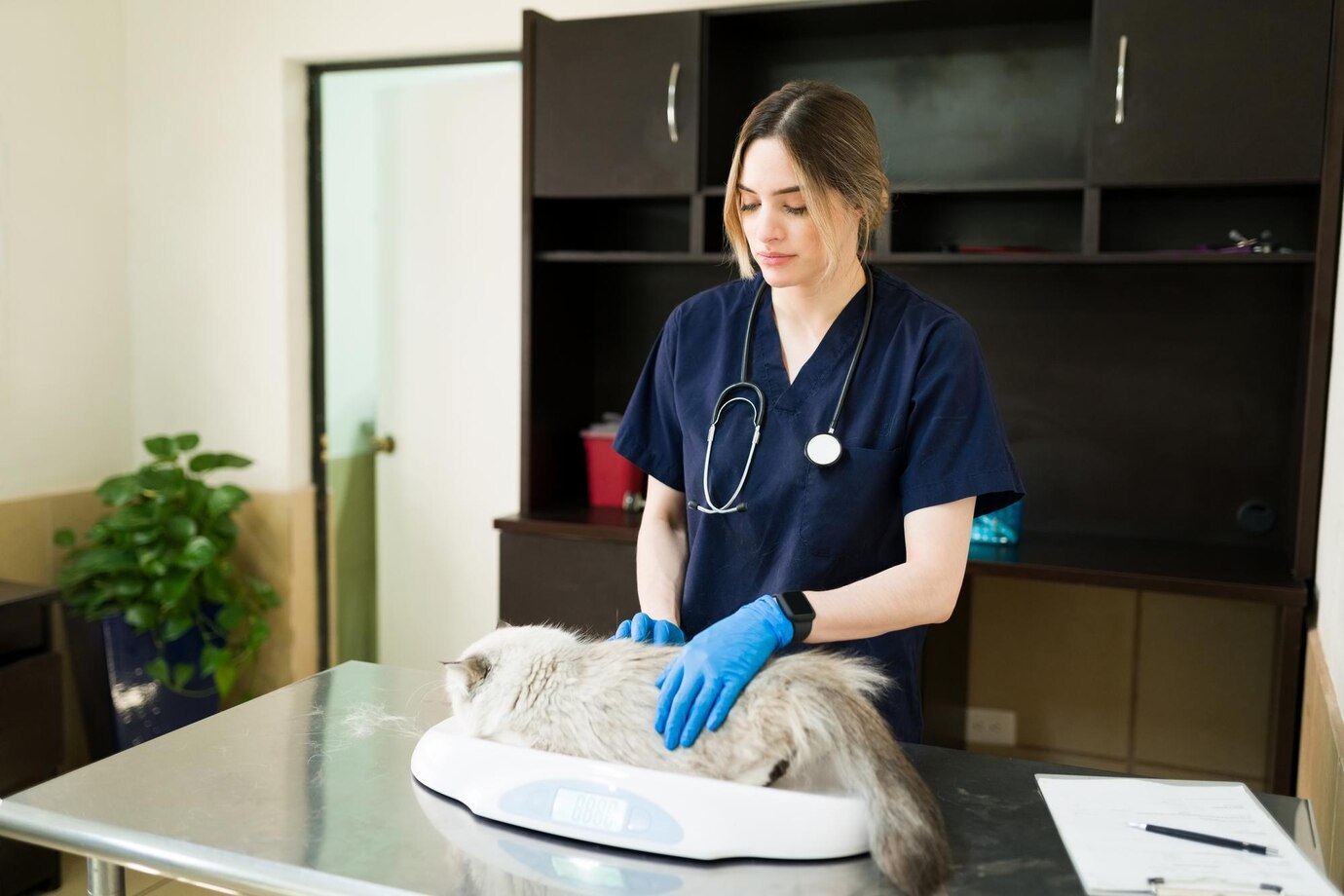
Veterinary Payment Plans: An Alternative to Pet Insurance
Picture this: You’re at the vet with your curious cocker spaniel, Bailey, who’s managed to swallow something questionable — again. The vet recommends an X-ray and possibly surgery. The estimate? Just under £2,000. You don’t have pet insurance, and your heart sinks.
For many pet owners in the UK, this situation isn’t hypothetical — it’s real, stressful, and emotionally draining.
Whether it’s a sudden injury, an ongoing condition, or preventive care, veterinary costs can pile up fast. While pet insurance is often promoted as the go-to solution, it’s not right for everyone. High monthly premiums, exclusions for pre-existing conditions, and long waiting periods can leave many families without the help they need.
Enter vet payment plans — a practical, flexible alternative that lets you pay vet bills monthly, making financing pet healthcare more manageable and less panic-inducing.
In this guide, we’ll explore veterinary payment plans, how they work, who offers them, and whether they’re the right choice for your pet and your budget.
What Are Veterinary Payment Plans?

A veterinary payment plan is essentially a financial agreement between you and your vet clinic (or a third-party provider), allowing you to spread the cost of your pet’s treatment over time.
Instead of paying a large lump sum upfront, you pay in weekly or monthly instalments — often interest-free if paid on time.
Common Features:
- Fixed monthly payments
- No or low-interest options
- Flexible repayment terms (typically 3–12 months)
- Coverage for routine and emergency care
It’s a bit like paying for a new sofa or fridge in instalments — but in this case, it’s your pet’s health on the line.
Why Consider a Vet Payment Plan?
You might be wondering — if I can’t afford insurance, how will I afford payment plans?
Well, the key is control and flexibility. With insurance, you pay monthly whether you use it or not. With payment plans, you only pay when your pet actually needs treatment, and you’re not left fighting claim denials or chasing reimbursements.
Here’s when a payment plan makes sense:
- You’re dealing with a one-time expensive procedure
- You have multiple pets, and insurance costs would be astronomical
- Your pet has a pre-existing condition not covered by insurance
- You prefer to keep control over your finances without third-party rules
How to Access Vet Payment Plans in the UK
1. Direct Through Your Veterinary Practice
Some independent and chain vet practices offer in-house payment plans. These are often arranged at the time of diagnosis or when booking treatment. They may require:
- A deposit
- Proof of steady income
- A quick credit check
Example: Vets4Pets and Medivet locations occasionally offer in-house plans, especially for dental work or long-term medication.
2. Third-Party Financing Providers
When your local vet can’t offer a plan directly, they may partner with external financing companies that specialise in pet healthcare credit.
Popular UK providers include:
- CarefreeCredit
- Paycare
- Splitit or Klarna (depending on the clinic)
- BNPL (Buy Now Pay Later) providers offering interest-free periods
These plans often have the benefit of faster approval and transparent repayment schedules.
3. Charity or Non-Profit Partnerships

Some pet owners may be eligible for interest-free loans or funded care support through charities like:
- PDSA
- Blue Cross
- RSPCA
These usually depend on income and circumstances but can help cover costs and even offer repayment options.
What Types of Treatments Can Be Covered?
Vet payment plans are versatile and can often be used for:
- Surgical procedures (e.g. tumour removal, orthopaedics)
- Diagnostics (MRIs, x-rays, blood panels)
- Ongoing care (arthritis management, diabetes)
- Preventive care packages (vaccinations, flea/worm treatment, dental cleaning)
- Emergency care
Just be sure to check what is — and isn’t — included before signing anything.
Real-Life Example: Meet Luna and Her Unexpected Surgery
Luna, a four-year-old rescue husky in Leeds, began limping out of the blue. After some initial x-rays, her vet recommended ligament repair surgery, totalling nearly £2,500.
Her owners didn’t have insurance, but the clinic partnered with CarefreeCredit. They were approved for a 12-month plan at 0% interest, paying around £208 per month — far more doable than a one-time fee.
Luna’s back to bounding around the garden, and her family didn’t have to go into debt to get her there.
Pros and Cons of Vet Payment Plans
Benefits:
- Immediate treatment — no waiting for claim approvals
- Flexible budgeting — break large bills into smaller, manageable chunks
- No long-term commitment — pay only when needed
- Often interest-free if paid on time
Drawbacks:
- May require credit approval
- Late payments can lead to fees
- Not always available at all clinics
- Doesn’t cover everything — preventive care isn’t always included unless bundled
Vet Payment Plans vs Pet Insurance: Which Is Better?
Let’s break it down in a side-by-side comparison:
| Feature | Vet Payment Plans | Pet Insurance |
| Monthly Payments | Only when needed | Every month, regardless |
| Covers Emergencies | Yes, depending on provider | Yes, if covered under policy |
| Pre-existing Conditions | Often accepted | Typically excluded |
| Approval Required | Sometimes (credit check) | None (just premiums) |
| Claim Process | No claims — pay as agreed | Must submit claim and wait |
| Cost Predictability | Varies based on treatment | Fixed monthly fee |
The best option depends on your pet’s needs, your budget, and your peace of mind. Insurance offers comfort for those who want predictable coverage for anything that may happen. But for many, a hybrid approach works best—basic insurance plus a fallback plan in case of bigger bills.
Things to Ask Before Agreeing to a Payment Plan
Just like any financial agreement, it’s important to read the fine print.
Before signing up, ask your vet or provider:
- What’s the total repayment amount?
- Are there interest or hidden fees?
- Is there a penalty for early repayment?
- What happens if I miss a payment?
- Is the payment plan flexible in case my circumstances change?
Get it in writing — and never be afraid to ask questions.
Tips to Manage Pet Healthcare Costs Proactively
Even with payment plans, vet costs can add up. Here are some ways to reduce the stress (and the bill):
- Budget monthly for pet care — even a small amount set aside helps
- Prioritise preventive care to avoid expensive emergencies later
- Look into wellness plans — some vets offer packages for vaccines, check-ups, and more
- Compare vet prices — yes, you can shop around, especially for non-emergency treatments
- Build an emergency pet fund — aim for £500–£1,000 if possible
Final Thoughts: Making Pet Healthcare Affordable and Compassionate

At the end of the day, your pet’s health shouldn’t come down to a price tag. While not everyone can afford premium pet insurance, vet payment plans offer a compassionate, practical alternative to ensure your furry friend gets the care they need.
They allow you to pay vet bills monthly, avoid unmanageable one-off charges, and keep your pet’s wellbeing front and centre — where it belongs.
So, whether you’re dealing with an unexpected diagnosis or simply planning ahead, knowing your financing options gives you peace of mind and control when it matters most.


